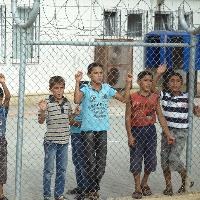
(VALLETTA) – There were 728,470 applications for international protection in the EU In 2017, a decrease of 44% compared to 2016, according to figures from the European Asylum Support Office published Monday.
The EASO’s ‘Annual Report on the Situation of Asylum in the European Union for 2017’ finds almost 1.3 million applications, while provisional data for early 2018 (January – April) shows that application levels have stabilised at an average of less than 50,000 per month.
Throughout 2017, migratory pressure at the EU external borders remained high, but decreased for a second consecutive year, mostly on the eastern and central Mediterranean routes, whereas there was an unprecedented upsurge on the western Mediterranean route. While overall the number of asylum applications registered in 2017 dropped, some countries still noted considerable increases. Syria (15%), Iraq (7%) and Afghanistan (7%) remained the top three countries of origin of applicants in the EU+. These were followed by Nigeria, Pakistan, Eritrea, Albania, Bangladesh, Guinea and Iran.
With respect to the number of pending cases, at the end of 2017 there were 954,100 applications awaiting a final decision, which represents a decrease of 16% over the end of 2016. This reflects the lower number of applications and suggesting greater efficiency in the asylum systems of Member States and the Common European Asylum System (CEAS). At the same time, the number of cases awaiting a decision at second or higher instance (appeal) more than doubled since the end of 2016, indicating a clear shift in case processing towards second instance.
Of all the first instance decisions issued in 2017, nearly 50% (462,355 out of 996,685 decisions) were positive. This recognition rate was 14 percentage points lower than in 2016. While the overall number of decisions decreased by 13% over 2016, reflecting a lower number of applications lodged, the amount of negative decisions actually increased from 449,910 in 2016 to 534,330 in 2017.
With regard to positive decisions, in 2017 there was a distinct decrease in the share of decisions granting refugee status (down to 50%, from 55% in 2016) or subsidiary protection (34%, from 37%), while there was a parallel increase in the proportion of those granting humanitarian protection (15%, up from 8%).
Latest figures for the first four months of 2018 highlight a further drop in the number of applications lodged. In fact, between January and April 2018 approximately 197,000 individual sought international protection in the EU, a level lower than the same period in each of the last three years. Still, it was higher than the pre-crisis levels in 2014. Syria, Iraq and Afghanistan continued to be the main countries of origin of applicants.
The decrease in the number of applications lodged in the EU was distributed across most citizenships of origin to different extents, but with some noteworthy exceptions. In particular, nationals of Venezuela and Georgia (two countries whose citizens are exempt from visa requirements when travelling to the Schengen Area), sought international protection more frequently than in 2017, increasing by 75 % and 133 %, respectively. The number of applicants from other countries of origin, including Iraq and Turkey, remained broadly stable with 2017.
Annual Report on the Situation of Asylum in the European Union 2017


